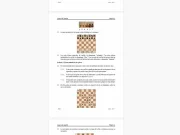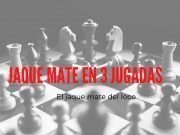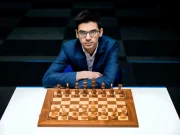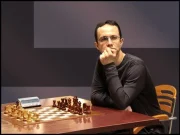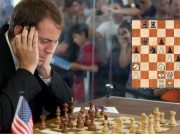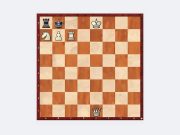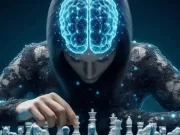El análisis SWOT (que es el equivalente al análisis DAFO en castellano) mediante el que se ponderan debilidades, fortalezas, oportunidades y amenazas, fue un modelo creado en los años setenta en la Universidad de Stanford. Allí analizaron los datos de las empresas más importantes del momento y llegaron a una interesante conclusión: existía una discrepancia de un 35% entre lo que las empresas hacían y los objetivos que querían cumplir. De hecho, muchos trabajadores de estas empresas no sabían por qué hacían su trabajo (esto creo que no ha cambiado demasiado a día de hoy). El problema no era de competencia de los empleados sino que los objetivos eran ambiguos o poco transparentes. Sinceramente creo que esta es la clave para mejorar en ajedrez. Aunque todos tenemos soluciones nos faltan los problemas, sin una buena definición del problema no es posible implementar la solución. Este hecho contrasta con algo que ya sabemos: en un altísimo porcentaje llevamos a cabo la jugada “pensada” en los 5 primeros segundos, ¿cómo es posible? ¿acaso alguien puede comprender un problema en ese tiempo? Esta combinación es una auténtica bomba de relojería, y es la explicación de la diferente fuerza de juego del jugador de club y el Gran Maestro. Mientras que el primero dedica su atención a aspectos menores, el Gran Maestro no calcula más (aunque también) sino que toma decisiones de mayor calidad por su profunda comprensión de lo que está sucediendo. Si quieres mejorar no des un valor superior a tus primeros 5 segundos de análisis por muy tentadores que sean, y recuerda, el problema no es encontrar la solución, es encontrar el problema.
El gran maestro Jedi, ¿dispuesto a jugar una partida?
ENGLISH VERSION
The SWOT analysis by which strengths, weaknesses, opportunities and threats are considered, a model was created in the seventies at the University of Stanford. There analyzed data from the largest companies of the moment and came to an interesting conclusion: there was a 35% discrepancy between what companies were doing and the goals they wanted to accomplish. In fact, many workers of these companies did not know why his work (I think it has not changed too much today).
The problem was not the competence of the employees but the targets were ambiguous or opaque. Honestly I think this is the key to improve in chess.
Although we lack solutions all have problems without a good definition of the problem is not possible to implement the solution. This contrasts with what we already know: in a high percentage carry out the move «designed» in the first 5 seconds, how is it possible? Could anyone understand a problem at that time? This combination is a real bomb, and is the explanation of the different force player game club and the Grand Master. While the former devotes his attention to minor points, the Grandmaster not calculate more (but also) but takes higher quality decisions for its deep understanding of what is happening. If you want to improve not give more than 5 seconds of your value analysis that are very tempting, and remember, the problem is not finding the solution, the problem is to find the problem.







